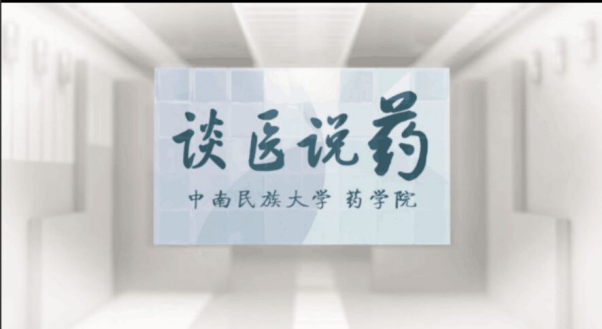
当前课程知识点:Diagnostics in Chinese Medicine > Week 6 Diagnosis methods: Inquiry (2) > 5.7 Inquiring of food and drink, appetite and taste > 5.7 Inquiring of food and drink, appetite and taste
返回《Diagnostics in Chinese Medicine》慕课在线视频课程列表
返回《Diagnostics in Chinese Medicine》慕课在线视频列表
同学们好
下面我们继续学习中医问诊之问饮食口味
问饮食口味
是指对病理情况下面的口渴与饮水
食欲和食量 口中气味等
进行询问的方法
问饮食口味主要是为了
了解体内津液的盈亏及输布的情况
脾胃运化的功能及疾病的寒热虚实的性质
我们首先来看看第一个就是
问口渴和饮水
问口渴饮水主要是用来辨别疾病的寒热虚实
以及津液的盈亏和输布的情况
首先我们来看看第一个就是 口不渴饮
正常人津液没有损伤
是不会出现口渴的 也不想喝水
但是在病变时候也会出现口不渴 不想喝水
口不渴 说明津液没有受伤
津液在什么情况下不会受伤呢
通常是感受了寒邪或湿邪
引起的寒证或湿证
是不会损伤人体的津液
所以也会出现口不渴饮
口渴欲饮 根据他的表现可分为三种
微渴 大渴 以及渴不多饮
我们来看第一种口渴
微渴
微渴 是指一般的口渴 想喝水
通常表明津液有损伤 但并不严重
常见于热邪和燥邪 损伤了津液
但并不严重
另外一种微渴是 口干微渴
同时兼有发热 微有恶寒
这是外感温病初起
热邪损伤津液 也不太严重
而表现出来的微渴证
第二种口渴就是 大渴
大渴有两种表现
若口渴非常明显
而且喜欢喝冷饮
常见于里热炽盛的阳明经证
里热炽盛 津液大伤
所以口渴表现非常严重 而且喜欢喝冷饮
另外还有一种大渴 喝水很多
伴有多食多尿 同时身体逐渐消瘦
这是消渴病
相当于西医上所说的糖尿病的病人
典型的三多一少的症状
第三种口渴 就是渴不多饮
渴不多饮有四种表现
一种是渴不多饮 伴有
身热不扬 心中烦闷 苔黄腻者
通常是湿热证导致的
这是因为 热邪伤津 所以口渴
因为体内有湿 所以不会多饮
另外一种是渴不多饮 伴有身热夜甚
也就是 发烧在晚上的时候会比较明显
同时也会有心烦睡不着觉
舌红绛的表现
这见于热病
温热之邪进入营分证
因为热邪耗损阴津 所以口渴
但是又由于热邪 能够蒸腾营阴 上承于口
所以虽然渴 却不想多喝水
再一种渴不多饮 表现出 虽然有饮水
但是喝进去的水 会把它吐出来
我们称为水入即吐
通常见于痰饮停于胃
这是因为痰饮内阻
津液不能够上承于口 所以口渴
但是体内有饮邪 饮与津液同样是属于阴液
体内并不缺水
所以渴不多饮 水入即吐
最后一种渴不多饮 表现出口干 但是漱水而不欲咽
也就是说
他口里面含着一口水 但是不会把它吞下去
这种病人会同时伴有面色黧黑 肌肤甲错的表现
与瘀血阻滞有关
因为瘀血内阻 津液失去输布 而出现口干
但是体内的津液并没有亏乏 所以喝不进去水
只是漱水 但不欲下咽
以上是口渴与饮水的意义
下面我们来看一看 食欲和食量
食欲 是指进食的要求和对进食的欣快感觉
通常是指想不想吃
食量 是指实际的进食量
通常是指吃饭 吃的多不多
想不想吃 吃的多不多
这是判断脾胃功能强弱
以及疾病的预后和转归的一个很重要的指标
这里我们要强调一下 就是胃气
胃气 是指的脾胃功能
也就是脾胃运化水谷精微的功能
中医认为 有胃气则生 无胃气则死
也就是说 当脾胃功能强的时候
表明有胃气
那么这个人要么就是健康的
要么即使他有病 病情也比较轻
预后比较好
而当脾胃功能不足的时候
既不想吃 吃的也很少
这表明无胃气
无胃气表明病人病情比较重 预后不太好
当然
这里的 无胃气则死 并不表明
胃口不好 吃很少的人 就一定会死
只是说 脾胃功能正常与否
与疾病的预后和转归的判断
是非常重要的
所以我们要判断一个病人的疾病轻重和预后转归
就要看他的脾胃功能到底好不好
他想不想吃 吃的多不多
关于食欲和食量
我们这里分成三个部分来学习
第一个 我们来学习食欲减退和厌食
食欲减退是指进食的欲望减退 甚至不想进食
中医又称为不欲食 食欲不振
纳少 纳呆 纳差等等
通常只要脾胃有病变
就一定会出现食欲减退的表现
比如
脾胃虚弱 湿邪困脾 饮食停滞等等
都可以导致食欲减退
另外
肝胆湿热也会影响到脾胃的运化功能
从而导致食欲减退
厌食 是指厌恶食物
甚至是闻到食物的味道 就不想吃饭了
这与饮食积滞 脾胃湿热 肝胆湿热
引起的脾胃的病变密切相关
但是在临床上 我们碰到有一些早孕的孕妇
如果有厌食表现 这属于生理的的现象
不属于病变状态
第二 我们来看看 就是饥饿的表现
饥饿的表现 有两种
一种是消谷善饥 一种是饥不欲食
消谷善饥 是指食欲过于旺盛 进食量多
食后不久又会觉得饥饿
这种吃得多 饿得快的症状 又称为多食易饥
而饥不欲食 是指的虽然有饥饿感
但不欲食
勉强进食 但是食欲很少
饥饿与胃的受纳腐熟的功能有密切的关系
一般来讲
胃火比较明显的时候
通常会使胃的受纳腐食的功能增强
胃火有两种 一种是实火 一种是虚火
当胃实火亢盛
腐熟太过
它就会表现出多食易饥的症状
如果多食
伴有多饮 多尿以及身体消瘦
这是消渴病典型的症状
如果吃的多 但是大便稀溏
这是属于胃的腐熟功能正常
但是脾的消化吸收功能比较弱
我们称为胃强脾弱
饥不欲食也是由于火热 导致了胃的腐蚀功能太过
但是这种火热 不是实火
而是由于胃阴不足的虚火引起的
虚火内扰 同样也可以使
胃的腐熟太过而引起饥饿感
而如果阴液亏虚 阴虚失润
胃的受纳功能减退 所以不想吃
这种病人通常会这样描述病情
人已经饿得不行了
就是不想吃
或者是即使想吃
也只能吃一些流质食物
第三个就是偏食食物和异物以及食欲的变化
偏食食物和异物 比如
嗜食生米 泥土 纸屑等等
与小儿的虫病有关系
食欲的变化要分三种情况来看
如果在疾病中食欲慢慢地减退
食量也慢慢的减少
这是胃气减退 疾病加重的表现
如果在疾病过程中
食欲渐渐的恢复
食量也渐渐的增加
这是胃气渐复 疾病向好的一个标志
如果久病重病的病人
本来是不能吃饭
但突然想吃 而且吃的还很多
中医把这种现象称为 除中
它是胃气将绝 病危的一种征象
下面来学习问口味的意义
口味是口中异常的味觉或者是气味
口味可以反映脾胃的功能
因为 脾开窍于口
另外 五味合五脏
所以口味还可以反映五脏的病变
我们来看看口中不同的味道 有怎样的病变意义
口淡 是指口中乏味甚至无味
请注意
有一些人觉得自己口中没有异味
这是否就是口中无味的口淡呢
其实不是的
口淡 是指什么味道都尝不出
正常人口中没有异味
但是 如果吃甜的 可以感觉到甜味
吃酸的 可以感觉到酸味等等
所以 我们不能够把正常人口中没有异味
称之为口淡
口淡 是指口中没有味道 而且也尝不出任何味道
通常是指虚证和寒证的病变
比如 脾胃虚寒 运化失职
或者是寒湿中阻 以及寒邪犯胃
导致的阴邪不损耗阴液 引起的口淡
口酸 酸入肝 所以
肝胃郁热的病人 比较容易见到口酸
泛吐酸水
另外 吃多了 饮食积滞
也会出现 嗳腐吞酸的表现
口苦
苦属火 所以 肝胆火旺
或者心火上炎的病人
都会表现出口苦
口甜
甜入脾
所以口甜 通常是与脾病有关
比如
脾胃湿热 或者脾气亏虚
都可以感到口甜
口粘腻 是指口中总是感觉到不爽
通常与湿热 痰热 饮食积滞有关
口中黏腻常常与味觉异常同时出现
如果口黏腻 伴有甜的味道
通常表明湿热 痰热在脾胃
如果口黏腻 伴有苦的味道
通常代表湿热 痰热在肝胆
口涩
涩 是干燥的意思
口涩 就是口中没有水分
燥热伤津 阳热气火上逆
都会表现出口涩
而且口涩通常与舌燥同时出现
口咸 是指口中有咸的味道
咸入肾
所以口中有咸味
通常代表的是肾虚水泛的病变
以上是我们学习的饮食口味的病变及其意义
本节课就讲到这里
-Introductory remark
--QQ groups、WeChat public account
-Introduction
--【Discussion 1】Why do you want to take this course?
-Unit test for Introduction
-1.1 Yin-yang theory
-1.2 The theory of five elements
--1.2.1 The theory of five elements
--1.2.2 Application of the theory of five elements
-Frequently Asked Questions
-Unit test for week 1
-2.0 Outline
--【Discussion 2】How to understand the holistic view centered on the Zang Fu theory?
-2.1 Liver
--【Discussion 3】Why is repose more important than vigorous exercise in recuperation for patients with
-2.2 Heart
-2.3 Spleen
-2.4 Lung
--2.4 Lung
-2.5 Kidney
-2.6 Six fu organs
-Frequently Asked Questions
-Unit test for week 2
-3.1 Qi
--3.1 Qi
-3.2 Blood
-3.3 Body fluid
-3.4 The relationship of qi, blood and body fluid
--3.4 The relationship of qi, blood and body fluid
--【Discussion 4】A discussion about the theory of qi, blood and body fluid
-Frequently Asked Questions
-Unit test for week 3
-4.0 Outline
-4.1 Six exogenous factors
--4.1.2 Nature and pathogenicity of wind and cold
--4.1.3 Nature and pathogenicity of summer heat and damp
--4.1.4 Nature and pathogenicity of dryness and fire
-4.2 Etiology of visceral impairment
--4.2 Etiology of visceral impairment
-Frequently Asked Questions
-Unit test for week 4
-5.0 Outline of inquiry
--【Discussion 5】If you were a patient, how would you describe your condition to your doctor first?
-5.1 Inquiry of Chills and fever
--5.1.1 Chills and fever(Aversion to cold with fever)
--5.1.2 Chills and fever(Chills without fever)
--5.1.3 Chills and fever(Fever without chills)
--5.1.4 Chills and fever(Alternative chills and fever)
--【Discussion 6】How to understand "if you have clinical manifestations of cold, that is exterior syndr
-5.2 Inquiry of perspiration
-Frequently Asked Questions
-Unit test for week 5
-5.3 Inquiring of pain
--【Discussion 7】How to understand "stagnation leading to pain and innourish leading to pain"?
-5.4 Inquiring of head, body, thorax and abdomen
--5.4 Inquiring of head, body, thorax and abdomen
-5.5 Inquiring of ears and eyes
--5.5 Inquiring of ears and eyes
-5.6 Inquiring of sleep
-5.7 Inquiring of food and drink, appetite and taste
--5.7 Inquiring of food and drink, appetite and taste
-5.8 Inquiring of defecation and urination
--5.8.1 Inquiring of defecation
--5.8.2 Inquiring of urination
-5.9 Inquiring of infantile and women's disease
--5.9 Inquiring of infantile and women's disease
-Unit test for week 6
-6.0 Outline of Observation
--【Discussion 8】Please use the whole body inspection (including the expression, complexion and figure)
-6.1.1 Observation of vitality
--6.1.1 Observation of vitality
-6.1.2 Observation of the color
--6.1.2.1 The content, principles of inspection of the color
--6.1.2.2 Indication of diseases by five colors
--【Discussion 9】How do you understand the normal complexion of a normal people?
-6.1.3 Observation of the appearance
--6.1.3 Observation of the appearance
-6.1.4 Observation of figure and posture
--6.1.4 Observation of figure and posture
-Unit test for week 7
-6.2.1 Observation of head and face
--6.2.1 Observation of head and face
-6.2.2 Observation of five sensory organs
--6.2.2.1Observation of five sensory organs(observation of eyes,ears,nose)
--6.2.2.2Observation of five sensory organs(observation of lips,teeth and gums,throat)
-6.2.3 Observation of body
-6.2.4 Observation of limbs
-6.2.5 Observation of two lower orifices
--6.2.5 Observation of two lower orifices
-6.2.6 Observation of skin
-6.3 Observation of excreta
-6.4 Observation of infantile fingerprints
--6.4 Observation of infantile fingerprints
-Frequently Asked Questions
-Unit test for week 8
-7.1 Outline of tongue inspection
--7.1.1 The morphology and structure of the tongue
--7.1.2 The principle of tongue examination
--7.1.3 The method and precaution of tongue examination
--7.1.4 The content of tongue examination, normal tongue
-7.2 Inspection of tongue structure
--7.2.1 Observe the color of tongue
--7.2.2 Observe the shape of tongue
--7.2.3 Observe the states of tongue
--7.2.4 Observation of sublingual vein
-7.3 Observation of tongue coating
--7.3.1 Observation of coating texture
--7.3.2 Observe the color of coating
-7.4 Clinical significance of tongue diagnosis
--7.4 Clinical significance of tongue diagnosis
--【Discussion 10】Why to observe the tongue can be used to diagnose disease?
-Unit test for week 9
-8.1 The principle of pulse examination
--8.1 The principle of pulse examination
-8.2 The regions and methods of pulse examination
--8.2 The regions and methods of pulse examination
-8.3 The elements of pulse examination and the normal pulse
--8.3 The elements of pulse examination and the normal pulse
-8.4 Characteristics and significance of pulse
--8.4.1 Superficial pulse, deep pulse, slow pulse, rapid pulse
--8.4.2 Surging pulse, thin pulse, long pulse, short pulse
--8.4.3 Feeble pulse, forceful pulse, slippery pulse, uneven
--8.4.4 Taut pulse, tense pulse,soggy pulse, moderate pulse
--8.4.5 Knotted, slow-regular-intermittent, irregularly abrupt
-8.5 Similar pulse, concurrent pulse, pulse indicating deterioration of visceral qi۞
--8.5 Similar pulse, concurrent pulse, pulse indicating deterioration of visceral qi۞
--【Discussion 11】Why is complex pulse more common than single-factor pulse?
-8.6 Women’s pulse, children’s pulse
--8.6 Women’s pulse, children’s pulse
-8.7 The clinical significance of pulse diagnosis
--8.7 The clinical significance of pulse diagnosis
-Unit test for week 10
-9.1 Listening
-9.2.1 Abnormal sound
-9.2.2 Abnormal language
-9.2.3 Respiratory abnormality
--9.2.3 Respiratory abnormality
-9.2.4 Cough
--【Discussion 12】How to observe the patient's cough sound and sputum changes to determine whether the
-9.2.5 Abnormal sounds of the stomach and intestines
--9.2.5 Abnormal sounds of the stomach and intestines
-9.3 Smelling
--【Discussion 13】How to diagnose by smelling?
-Unit test for week 11
-10.1 The method, meaning and precautions of palpation
--10.1 The method, meaning and precautions of palpation
-10.2 Contents of palpation
--10.2.1 Palpating chest and hypochondrium
--10.2.2 Palpating stomach and abdomen
--10.2.4 Palpating hands and feet, palpating acupoints
--【Discussion 14】How to determine whether external or internal injuries?
-Unit test for week 12
-Conclusion
-Final Exam
--Final Exam

